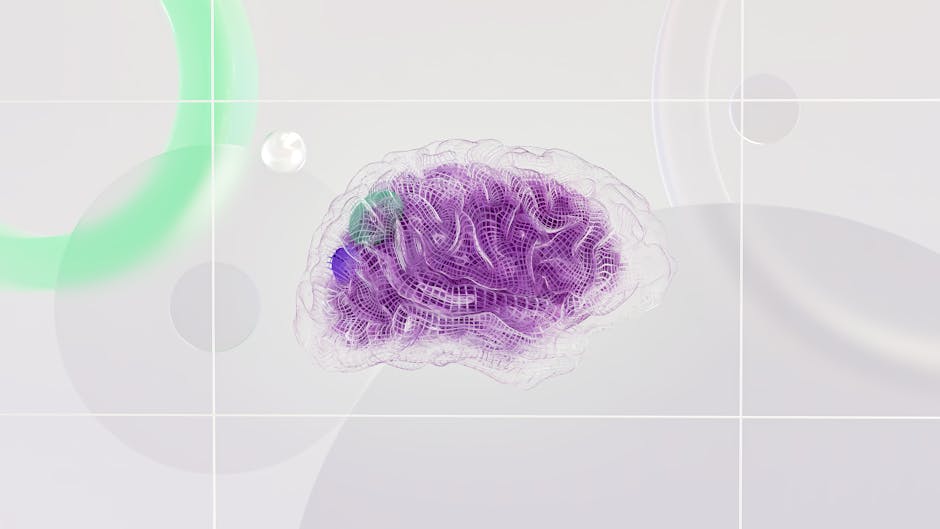Exploring GraphQL: An Alternative to REST
You’re tyred of REST’s one-size-fits-all approach, where you’re forced to retrieve a ton of unnecessary data, waiting for what feels like an eternity for it to load. Enter GraphQL, the flexible, efficient, and scalable alternative that lets you ask for exactly what you need – no more, no less. With GraphQL, you dictate what data you want, and you get it, reducing network overhead and minimising data transfer. Want to ditch the data overload and performance bottlenecks? Then, let’s explore the world of GraphQL, where queries are optimised, caching is key, and performance is paramount – and discover a whole new way of building APIs that’s tailor-made just for you.
Key Takeaways
• GraphQL is a flexible, efficient, and scalable alternative to traditional REST APIs, offering a bespoke solution that adapts to client needs.• GraphQL’s query language allows clients to specify exactly what they need, reducing network overhead and minimising data transfer.• Unlike REST APIs, GraphQL eliminates data overload by only retrieving necessary data, reducing performance bottlenecks and improving user experience.• GraphQL’s schema definition and types provide a structured approach to API design, making it easy to navigate and maintain complex data models.• GraphQL’s resolver patterns and data pipelines enable efficient data fetching, caching, and error handling, ensuring scalable and preformant APIs.
Understanding GraphQL Basics

Dive into the world of GraphQL and you’ll quickly realise that it’s not just another query language – it’s a game-changer that’s about to flip your understanding of APIs on its head.
You might be wondering, what’s the big deal about GraphQL? Well, let’s take a step back and explore its history. GraphQL was first developed in 2015 by Facebook (yes, that Facebook) as an internal tool to optimise their mobile app’s performance. It was later open-sourced in 2016, and since then, it’s been gaining popularity at an incredible pace.
As you explore deeper, you’ll notice that GraphQL isn’t just a query language, but a paradigm shift in how we approach APIs. It’s an evolution, not a revolution. Think about it – traditional REST APIs are like a rigid, one-size-fits-all approach, whereas GraphQL is like a bespoke, tailored solution that adapts to your needs.
With GraphQL, you ask for what you need, and you get exactly that – no more, no less. It’s like having a personal shopping assistant, instead of rummaging through a cluttered store.
In the world of API evolution, GraphQL is the next logical step. It’s not meant to replace REST entirely, but to offer a more flexible, efficient, and scalable alternative. So, buckle up and get ready to rethink everything you thought you knew about APIs. GraphQL is here to stay, and it’s about to change the game.
REST Limitations and Challenges

You’ve been there – stuck with a bloated API, forced to retrieve a ton of data you don’t need, just to get that one tiny piece of information.
And let’s not forget the performance bottlenecks that come with it – your users are stuck waiting for what feels like an eternity for the data to load.
It’s time to face the music: REST isn’t always the most efficient way to get the job done.
Data Retrieval Complexity
When querying a REST API, you’re often forced to play a guessing game, requesting a fixed set of data and hoping it’s enough to fulfil your needs, only to find yourself making multiple round trips to the server to fetch all the necessary information.
It’s like trying to order food at a restaurant without knowing the menu – you might end up with a bunch of unnecessary sides and a side of data overload.
This retrieval pattern is far from ideal.
You’re stuck with a take-it-or-leave-it approach, where the API dictates what data you get, rather than the other way around.
And good luck if you need to fetch data from multiple endpoints – you’ll be making multiple requests and dealing with the ensuing data chaos.
It’s like trying to assemble a puzzle with missing pieces, only to realise you’ve got a bunch of irrelevant pieces cluttering up the picture.
The result? A clunky, inefficient data retrieval process that’s more frustrating than fulfilling.
Performance Bottlenecks
Frequently, REST APIs become the bottleneck in your application’s performance, slowing you down with every round trip to the server, like a traffic jam on the information highway.
You’re stuck, waiting for data to trickle in, while your users tap their feet impatiently. The culprit? Network Congestion. With REST, every request is a new journey, clogging up the pipes and causing delays.
And when you finally get there, you might find that your Database Overload is the real bottleneck. You’re not getting the data you need, and your app is stuck in neutral.
But that’s not all – REST’s rigid structure means you’re often fetching way more data than you need, just to get that one piece of info. It’s like buying a whole book just to read one chapter.
And don’t even get me started on the overhead of parsing and processing all that extra data. It’s like trying to drink from a firehose.
The result? Your app is slow, clunky, and frustrating.
It’s time to rethink your API strategy and consider a more efficient, flexible approach – like GraphQL.
GraphQL Query Language

With GraphQL’s query language, you’re basically telling the server exactly what you need, and it’s about time, considering the sloppy request-response games we’ve been playing with REST. No more over-fetching or under-fetching; you get precisely what you ask for, and that’s a beautiful thing.
The query language is designed to optimise performance and reduce network overhead.
Query optimisation: GraphQL allows you to specify exactly which fields you need, reducing the payload size and minimising the amount of data transferred. This means faster response times and a more efficient use of resources.
Syntax nuances: GraphQL’s syntax is designed to be easy to read and write, with a focus on simplicity and clarity. For example, you can use aliases to rename fields, making your queries more concise and expressive.
Fragments: GraphQL’s fragment system allows you to reuse parts of your queries, reducing code duplication and making your codebase more maintainable.
Schema Definition and Types

You’re finally ready to get your hands dirty with schema definition and types – the bread and butter of GraphQL.
Now, it’s time to define those schema types and figure out how they relate to each other (because, let’s face it, they’re not just solo artists).
You’ll soon discover that these type relationships are the secret sauce that makes your GraphQL API truly shine.
Defining Schema Types
As you plunge into the world of GraphQL, defining schema types becomes a pivotal step in shaping the backbone of your API, and it’s time to get familiar with the syntax and semantics that bring your data to life.
Think of schema types as the building blocks of your GraphQL API. You define them using the type keyword, followed by the type name and its fields. For instance, a simple User type might look like this: type User { id: ID! name: String! }.
Schema types have three essential characteristics:
-
Schema Evolution: Your schema will evolve over time, and GraphQL allows you to make changes without breaking existing queries.
-
Type Inheritance: You can create new types that inherit fields from existing types, making it easy to create specialised versions of a type.
-
Explicitness: GraphQL is all about explicitness, so you need to explicitly define each type and its fields – no guessing games here!
Type Relationships
Now that you’ve got a solid grasp on defining individual schema types, it’s time to connect the dots and explore how these types interact with each other through type relationships.
Think of it like a social network, but instead of people, you’re dealing with data models. You’ve got users, products, orders, and reviews – all these types need to talk to each other.
That’s where type relationships come in.
GraphQL’s type system is all about defining these relationships, making it easy to navigate from one type to another.
It’s like following a trail of breadcrumbs through your data model. You can define one-to-one, one-to-many, or many-to-many relationships, and GraphQL will take care of the type inference for you.
This means you can focus on modelling your data, rather than worrying about the underlying implementation.
Resolvers and Data Fetching

In the world of GraphQL, resolvers are the wizards behind the curtain, conjuring up data from the depths of your backend to satisfy the queries of your hungry clients. You might think of them as the middlemen (or women) who fetch the data, transform it, and then serve it up to the client in a neat little package.
But, of course, it’s not that simple. Resolvers are the backbone of your GraphQL API, and they require careful planning and implementation to make your data pipelines efficient and scalable.
Three key things to keep in mind when working with resolvers:
-
Resolver patterns matter: The way you structure your resolvers can make or break your API’s performance. Consider using resolver patterns like the ‘Repository Pattern’ or the ‘Service Pattern’ to keep your code organised and maintainable.
-
Data pipelines are vital: Your resolvers are only as good as the data pipelines that feed them. Make sure you’re using efficient data pipelines that can handle high volumes of traffic and large datasets.
-
Keep it concise and focussed: A good resolver should do one thing and do it well. Avoid cluttering your resolvers with unnecessary logic or complex transformations – keep them lean, mean, and focussed on fetching the data your clients need.
Caching and Performance Optimisation

You’ve optimised your resolvers, but if your API is still running slower than your grandma’s gossip circle, it’s time to tackle the next hurdle: caching and performance optimisation.
Think of caching like a speed-reading ninja – it helps your API access the data it needs in a flash, without having to redo the same work over and over. By storing frequently accessed data in a cache, you can reduce the number of requests made to your database, which means faster response times and happier users.
But, of course, there’s a catch. Cache invalidation is like trying to get your cat to take a selfie – it’s a delicate process that requires finesse. When your data changes, your cache needs to be updated to reflect those changes. If not, you’ll be serving up stale data, which is basically like serving yesterday’s pizza at a dinner party. Not. A. Good. Look.
Query optimisation is another key player in the performance optimisation game. It’s like streamlining your API’s workflow, eliminating unnecessary steps, and making sure each request is as efficient as possible.
Implementing GraphQL in Practise

As you trade in your RESTful API for a GraphQL one, be prepared to confront a slew of new challenges, from schema design to resolver implementation. It’s like switching from a comfortable old car to a sleek new sports car – it’s exciting, but you’ll need to learn new tricks to handle the extra horsepower.
In practise, implementing GraphQL can be a wild ride, full of twists and turns. You might encounter:
Schema design conundrums: Figuring out the perfect schema for your API can be a challenging task. You’ll need to balance flexibility with performance, all while keeping your developers happy.
Resolver implementation hurdles: Those resolvers won’t write themselves, and you’ll need to tackle the complexities of data fetching, caching, and error handling.
Production deployment drama: When it’s time to deploy your GraphQL API to production, you’ll need to make certain it’s scalable, secure, and preformant. No pressure, right?
But don’t worry, with the right tools and a healthy dose of patience, you’ll be mastering these challenges like a pro in no time. And when you do, you’ll be rewarded with a faster, more flexible, and more efficient API that will make your users (and your developers) very happy indeed.
Conclusion
You’ve made it to the end of this GraphQL adventure!
Now, go forth and conquer the world of APIs!
Did you know that by 2025, it’s estimated that 90% of all web development will be API-centric?
That’s a whole lotta APIs!
As you embark into the world of GraphQL, remember: it’s not just a query language, it’s a game-changer.
So, what’re you waiting for?
Get querying!
Contact us to discuss our services now!

